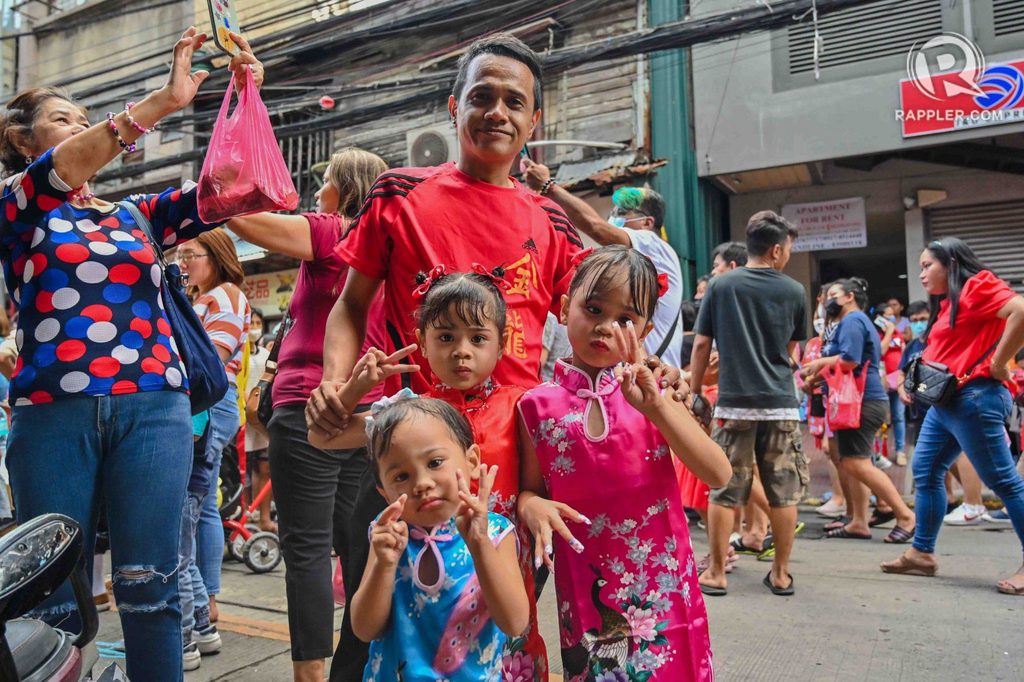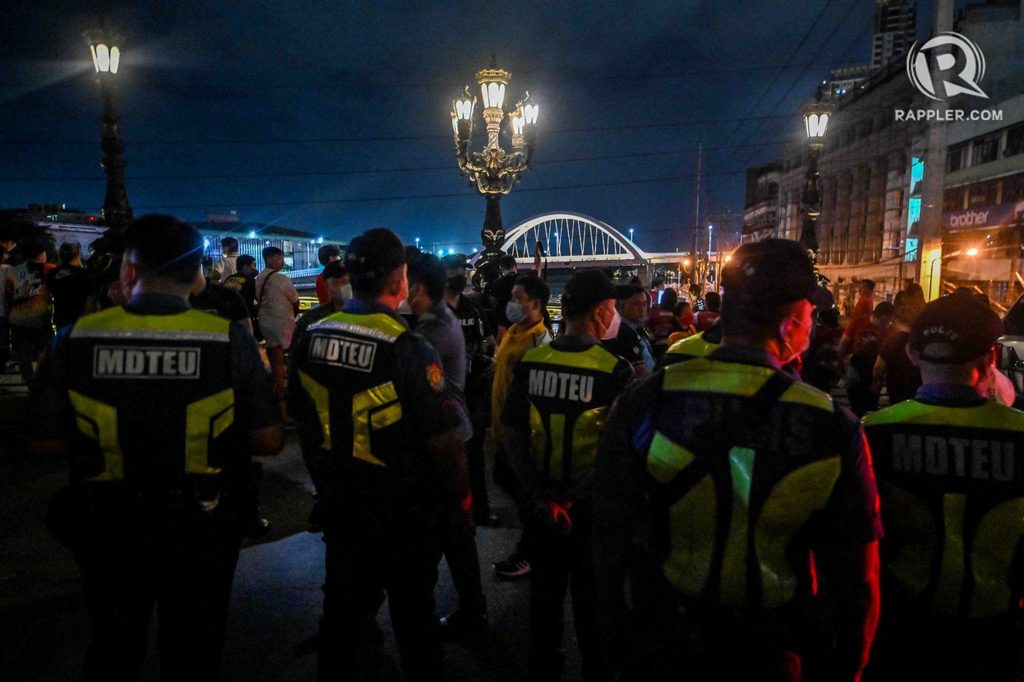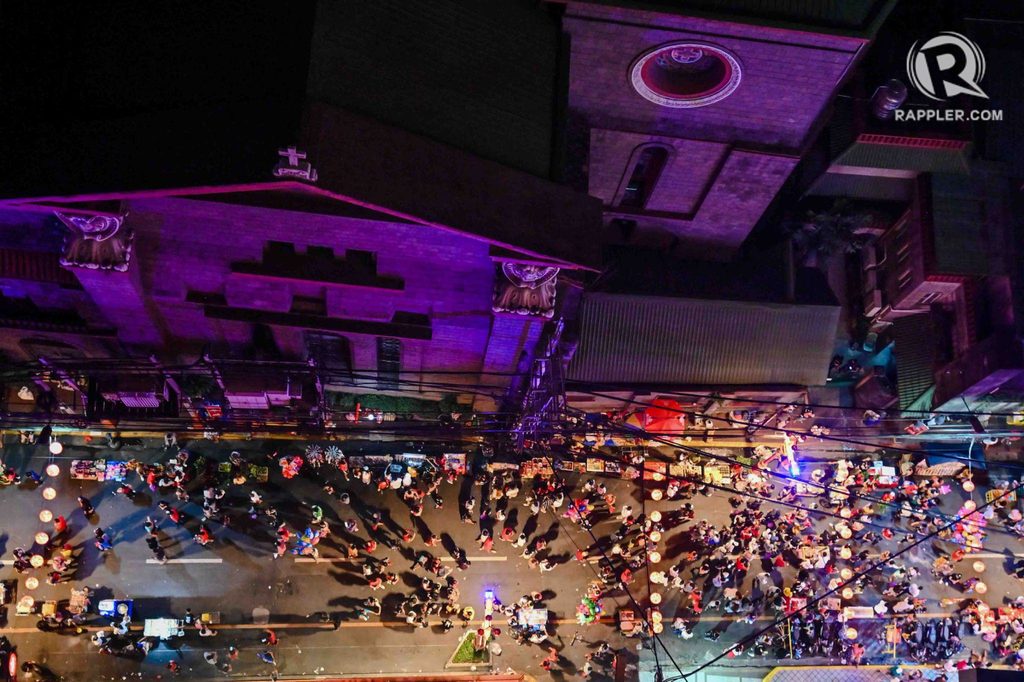SUMMARY
This is AI generated summarization, which may have errors. For context, always refer to the full article.

MANILA, Philippines – 2023’s Chinese New Year marks the start of the Year of the Rabbit, known to bring peace, stability, and good luck. In the Philippines, one of the most popular places to celebrate the Chinese New Year is in Binondo, Manila, where a large Filipino-Chinese community resides.

Despite the ongoing pandemic, Manila celebrated for four days straight, with festivities including a food festival, a dragon dance display, a solidarity parade, and for the first time, a dragon boat race. The public was still advised to wear face masks in crowded areas to prevent COVID infection.

The streets of Binondo were filled with vibrant colors and traditional Chinese decorations – red lanterns, golden trinkets, and banners lining the streets. Lucky charms, kid’s toys, and those indispensable boxes of tikoy (Chinese New Year pudding) dominated the stalls of vendors along the street. Even small animals such as colored chicks, ducks, and baby rabbits were sold at notable corners.

Another exciting aspect of this year’s celebrations is the return of the fire dancers, post-lockdown. These performers, usually from the LGBTQ+ community, skillfully manipulate fire by spewing gasoline from their mouth towards a flaming torch, mimicking the dragon’s flames.


The highlight of the festival was the dragon dance display, where teams of performers dressed in brightly colored dragon costumes danced and paraded through the streets. It was the children dancing with makeshift lions and dragons made from cardboard or fruit baskets, however, who really stole the show. The dragon dance is said to bring good luck and fortune for the new year.




Mark Chioa, a delivery rider and Golden Dragon Dancer, holds an alternate identity as Grab Spidey, a famed icon and cosplayer known to dance with the dragons and lions during the festival. Due to the pandemic lockdown, he has yet to suit up, but he expresses gratitude that the celebration is back. Because of the smaller crowd, however, he notes that his team will be receiving fewer red envelopes or ampao this year.
“Nung lockdown hirap. Hindi makakilos, boring, at nakakastress mas lalo na nagdradragon kami. At least ngayon masaya at may mga tao na. Pero hindi parin ito tulad nang dati. Dagsaan talaga ang mga tao at mas marami pa kaming nakukuhang ampao noon. Pero okay na rin. Unang taon ng pagbabalik nito, sana sa susunod na taon, dumami ulit ang tao,” Mark shares.
(It was hard during the lockdown. We couldn’t move around, it was boring, and it was stressful especially since we were dragon dancing. At least now, it’s happier and there are more people around, though it’s not like before. Back then, there were droves of people and we’d get a lot of money from them. But it’s alright. It’s our first year back after a while, so hopefully there’ll be more people next year.)


Matthew Paz, who has always celebrated the new year in Binondo with his family, visited the temple at midnight. With no long lines, he was able to leave the temple right before the clock struck 12. Matthew explains that there are fewer people at the temple this year because of the pandemic.
“It’s usually the older generation who would traditionally visit the temple at midnight. But since the pandemic, either the elderly prefer to avoid the crowd or their family refuses to let them go,” he said.


Despite the challenges brought by the pandemic, the Chinese New Year in Binondo continues to attract a significant number of visitors. The Manila Police District reported that a cumulated number of 600,000 people visited Binondo to welcome the Chinese New Year on Saturday, January 21, with 15,000 people visiting as of 12 pm on Sunday, January 22 – the actual New Year’s Day.

At least 3,200 policemen were deployed for the events, according to PMaj. Philipp Ines, Manila Police District (MPD) spokesman. He also said they were backed by volunteer security organizations to ensure the safety of the people celebrating.

Sydneylyn Tan, manager of a hotel in Binondo, praised the various organizations involved in organizing the Chinese New Year celebrations in the area. She noted that there was a clear chain of command and that each individual involved had a specific task to accomplish.
“This year’s celebration is exciting since we didn’t have any celebration at all for the past two years. We just did the regular social media posting. Starting Monday, the Ongpin street was already closed to prepare for the celebration. The barangay officials are really hands-on to manage the people, crowd, and everything else. It’s exciting to know that the local government, the private entities are all chipping in to make this event really festive. Mas planned na ang mga events this year (The event are better planned this year). Very clear ang mga entities involved (The entities involved are very clear), like the DTCAM (Department of Tourism, Culture and Arts of Manila), who was the clear lead for this event, really planned it out and disseminated the information needed,” she said.

President Ferdinand Marcos Jr. also recognized the cultural and historical significance of the Chinese New Year celebrations in the Philippines. In a message, he called on Filipinos, including those of Chinese descent, to appreciate the richness of the celebration and the ties it creates between cultures. He described the celebration as “a new dawn that symbolizes our boundless wishes for prosperity for ourselves and our society.”
The Pyromusical Show for the Chinese New Year Countdown was launched at the newly built Intramuros-Binondo bridge for the first time. The bridge serves as a symbol of cooperation and partnership between the Philippines and China, as China provided financial assistance for the construction of the bridge. This highlights the increasing economic and cultural ties between the two countries. The bridge connects the Philippines’ oldest district, Intramuros, and Binondo, the oldest Chinatown in the world.

Overall, the Chinese New Year in Binondo, Manila was a success, with thousands of visitors flocking to the area to take part in the festivities and celebrate the new year with renewed hope. Despite the challenges brought by the pandemic, the celebrations continued to showcase the rich culture and tradition of the Filipino-Chinese community, with the different stakeholders excited for the next celebrations to come.



– Rappler.com
Add a comment
How does this make you feel?
There are no comments yet. Add your comment to start the conversation.